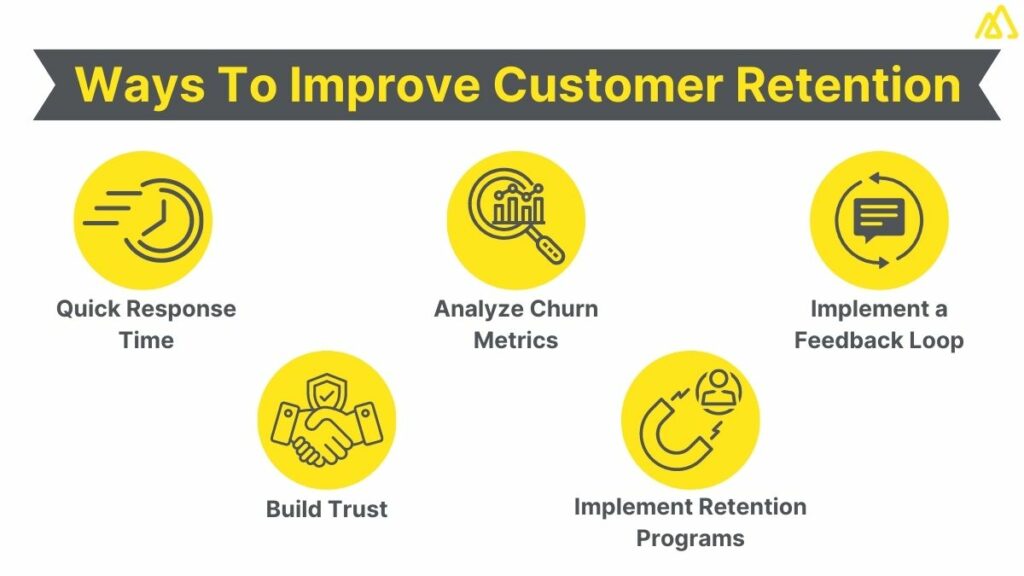Therefore, store management plays a crucial role in shaping the satisfaction of customers. When this happens positively, it boosts the shopping experience in that store, maintains customer loyalty, and increases sales. This article looks at some strategies, techniques, and best practices that could help transform customer service with respect to the role of store management in enhancing customer satisfaction. Be it optimizing store operations, training employees, or garnering feedback, effective store management directly influences customer retention and brand loyalty.
Key insights into store management and customer satisfaction
This guide explores key insights into effective store management for boosting customer satisfaction, focusing on strategies like omnichannel experiences, transparent communication, and personalized loyalty programs to improve customer experience and drive long-term loyalty in a competitive retail environment.
Key points readers will learn:
- How store management affects the purchase decision of the customers
- Best practices for successfully influencing the quality of the customer experience
- The flow of store operations and customer loyalty
- Policies that should be followed to ensure that the store is fully responsive to customers
- How training of employees can be used to improve service quality
- The importance of feedback regarding the management of a store
The moment store management is done correctly, it means customers will have good things to say concerning the store. Studied stores must offer a well-planned and comfortable shopping environment; not only to attract the customers but to satisfy them as well. The activities within the store environment, including selection, ordering, and merchandising as well as the conduct of employees, addressing customer requirements at the store level. In this article, we are going to discuss the best store management practices that will help to improve customer satisfaction, customer retention, and overall satisfaction.
The core of store management – customer-centric practices
A customer perspective of store management aims at satisfying the customers and improving the way customer is treated at the store.
Customer-centric store operations
Perceived value therefore starts with a favourable store environment that is also expeditious. This involves the entire space within which the store is located as well as the mood created by the store environment. The core of being a customer-oriented store is the fact that everything inside and outside that particular store will have to be for the benefit of the customer – online or offline. For instance, properly labeled signs, products arranged in an orderly manner, and the ability to quickly locate a worker to help are essentials for the efficiency of the store.
Personalizing the shopping experience
Another important factor is the possibility of offering an individualized approach to customers. By adapting customer data into recommendations delivery or using promotions as a message, a business gives customers a feeling of appreciation as individuals. Store management should focus on making the shopping experience as specific to each person as possible, through targeted advertising, loyalty programs, or simple things like memorizing often-shopping clients’ preferences.
Store management techniques to improve customer retention
In terms of store operations, methods like employee training or organization of store-related tasks contribute to increasing the number of loyal customers.

Staff training for excellence
This means that client service is one of the key determinants in clients deciding to return to a store. Staff training sessions is critical to ensuring that all staff can handle customers professionally and with concern. The staff on all levels must be capable of offering good customer service right from welcoming to even dealing with a complaint. Qualified and approachable staff add a lot more value to perceived customer satisfaction.
Efficient store operations and inventory management
Indeed, store management is not only the correct positioning of products and their proper storage but also effective operations. Customers always want the products they desire to be available on the shelves and easily reachable. Indeed it calls for the keen section in keeping with inventory control Methods. Quality, prompt, and adequate stock reduce customers’ impatience and increase the probability of acquiring more customers and customer repeat business. Choosing store management software or automated systems facilitates the identification of the stock-in-trade and enables organizations to determine the current stock levels.
Optimizing store performance for greater satisfaction
Store efficiency and customer satisfaction require effective and efficient management of stores through analysis and better approaches to store management.
Leveraging technology to enhance the customer experience
Store management tools, including point-of-sale (POS) systems, customer relationship management (CRM) software, and inventory management platforms, can provide data-driven insights that help enhance customer service. Real-time data allows store managers to make informed decisions on stock levels, customer preferences, and sales trends, helping them anticipate needs before they arise.
Continuous improvement through customer feedback
Orders from your clients are orders from the gods. It must be understood that customer feedback such as those obtained through surveys, review systems, or personal conversations, can help store management identify areas of strength and weakness. In essence, receiving feedback from customers and feeling that your company considers it leads to enhancing customer satisfaction.
Don’t miss out on improving your business’s Store Management Systems! Talk to one of our experts today
Practical solutions for boosting customer satisfaction
To boost customer satisfaction, small businesses, and retailers can implement practical, customer-centered strategies that enhance the overall shopping experience. Here are some actionable solutions:
- Adopt omnichannel strategies: Customers nowadays do not care anymore whether they are buying a product online or in a physical store. Omnichannel is about creating a seamless context where customers can easily move from online to the physical world, and vice versa, supported by detailed information about the customer. Some of the strategies applied under this strategy include: Branding and advertising, customer care and support, and product information management. The right omnichannel strategy enables retailers to reach customers where they are and makes their interactions easier and as seamless as possible.
- Set clear delivery expectations: Proper communication of delivery expectations and stock status should both be used for the proper management of customer expectations. Customer expectations should be informed in advance about delivery schedules, possible delays, and stock availability at each stage of the purchase process so as to build trust and avoid customer frustration levels. Should customers understand what they are in for, they are most likely to patronage the product or service out of the perceived worth and security.
- Promote loyalty programs: Loyalty as a promotional technique is another effective way for customers to be incentivized to keep coming back to your business. Small businesses can provide customers with rewards based on their purchase frequency, amount, or money-off coupons. A relatively practical concept of fundamental loyalty awards depending on customers’ purchasing power or involvement gives the additional feeling of usefulness, making people feel valued.
By applying these solutions—omnichannel experiences, transparent communication, and tailored loyalty programs—retailers can build stronger relationships with their customers, leading to improved satisfaction, repeat business, and sustained growth.
Conclusion
Therefore, store management is central to increasing customer satisfaction as discussed in the paper. Store management hence structures its strategy on a customer-centric approach, effective operations, and advanced technology to create value for customers. Promoting staff training focusing on customized approaches, and feedback management are equally contributing to the concept of customer loyalty and satisfaction. The changing environment of contemporary stores means that the current strategies must be reassessed and improved to enhance customer satisfaction levels.




